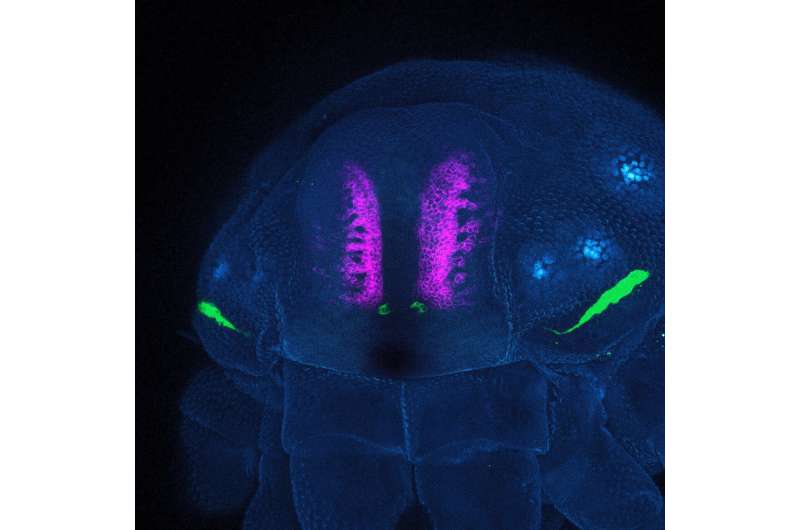March 2, 2024 report
This article has been reviewed according to Science X's editorial process and policies. Editors have highlighted the following attributes while ensuring the content's credibility:
fact-checked
trusted source
proofread
Saturday Citations: Will they or won't they? A black hole binary refuses to merge. Plus: Vestigial eyeballs

It's been a long, eight-day leap week, and this weekend, I'm spending my free time working on the manuscript for my style guide for science writers, "How to Effectively Split an Infinitive."
It's really a book about what they're already doing (splitting infinitive verbs with the meaningless adverb "effectively"), and I hope they find it validating enough that I can use the Kindle Books profits to effectively take my wife to a fancy restaurant. This week, we reported on the most massive black hole binary ever observed, the observation of vestigial eyes in embryonic daddy longlegs, and a possible treatment for PFAS blood levels.
Relationship prolonged
What's twice as massive as a supermassive black hole? A gravitationally bound pair of supermassive black holes. Researchers using the Gemini North telescope in Hawai'i analyzed a black hole binary in elliptical galaxy B2 0402+379 to figure out why supermassive black holes take so long to merge.
This particular pair is separated by 24 light-years, which is a razor-thin distance given their enormous mass, but they've been circling each other for the last 3 billion years without sealing the deal. Archival data from Gemini North's Gemini Multi-Object Spectrograph revealed the speed of the stars in the vicinity of the black holes, providing an inference of the mass of the black hole binary—about 28 billion times the size of the sun, the heaviest black holes ever measured.
This supports an existing theory that mass has an inhibitory role in black hole mergers. So why won't they just get a room already? The study provides evidence that the host galaxy was a merger of one or more older galaxies; following a merger, supermassive black holes slingshot past each other and are slowed in their mutual orbit by the transfer of energy to surrounding stars until they approach closely in a tight orbit.
However, it seems that these two black holes flung so much matter away in the process that there isn't enough remaining to slow their velocity further, inhibiting their merger in the final stages, like Rachel and Ross on "Friends."
Drug effectual
"Forever chemicals" is a romantically evocative term for per- and poly-fluoroalkyl substances; they act as endocrine disruptors, imitating human hormones and interfering, researchers believe, with development, metabolism, and fertility. They're also hepatoxic if you love bad news smothered in bad news gravy.
And "forever" isn't a 100% accurate cognomen since the serum elimination half-life is actually about five years, but if you're huffing scented laundry detergent on a regular basis, your own levels will probably remain stable over the long term. Seriously: Manufacturers put PFAS chemicals in just about everything.
Now, a multi-institutional group of researchers reports that cholestyramine, a medication for high cholesterol, drastically reduces PFAS levels in the blood. Because the drug has side effects, scientists are exploring the possibility of administering it to people who have major acute exposure to PFAS chemicals, such as people who have been exposed to emergency fire-suppression chemicals.
Eyes unnecessary
Two researchers at the University of Wisconsin-Madison report that daddy longlegs, the non-spider putative arachnids famous from cellars and backyards, exhibit vestigial eyes that date their evolutionary diversification much earlier than previously believed. Under the microscope, one of the researchers observed opsins, light-sensitive proteins, on the developing heads of huntsman embryos.
Their expression in embryos indicates the likelihood that the species once had two additional sets of lens-bearing eyes: one lateral on the side of the head, near the front pair of legs; the other in front of the huntsman's existing eyes. The persistence of these opsins and their active connection to the huntsman's brain suggests that even without lenses, the sites likely provide visual information about light and dark.
The study is also notable in its suggestion that the huntsman once resembled craggy, stoic Clint Eastwood (see image).
© 2024 Science X Network





















